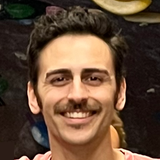The Portfolio Strategy that Leads to Perpetual Success
How we think about and execute the Township strategy across our portfolio companies.

At Township Ventures, we buy and build Texas businesses to create fulfillment for generations.
Our mission at Township Ventures is to build an ecosystem of Texas businesses that creates generational wealth, has a positive community impact, and supports people throughout their lives.
This mission guides our internal processes. As a long-term holding company, supporting our portfolio is one of our most important activities. Our ability to execute alongside and support the portfolio company proves the success of our core model at creating generational wealth.
Vision
A vision is simply the long-term desired outcome of the organization. Our vision for our portfolio is:
To be the premiere example of quality & service in each company's industry for decades.
We embed this vision into everything we build. It's not simply about "getting it done" but "getting it done right."
Principles

Just like a house built on sand will crumble under stress, a strategy built without principles will do the same. Our principles are selected to maximize long-term success within the portfolio.
Do Less, Better
"Do Less, Better" translates into honest prioritization and acceptance of the trade-offs in that prioritization. This may mean serving fewer customers but focusing only on high-quality, turn-key solutions for the best customers. It could be building fewer products but streamlining operations and serving more customers. It could be executing fewer ideas and instead focusing on one grand opportunity that requires the entire team to work together collectively.
No matter the decision, the understanding is that "quality" is more important than "quantity." This forces durability and long-term stability beyond simply the financial.
Start from First Principles
First-principles thinking is the process of breaking down a problem into its fundamental parts, understanding the limitations and unchangeable parts, and then building a solution from there.
For example, when we develop a business strategy, we focus on understanding the following core elements: the technology, the industry, the customers, the business model, and the team. With a deep understanding of these five elements, we can create novel solutions.
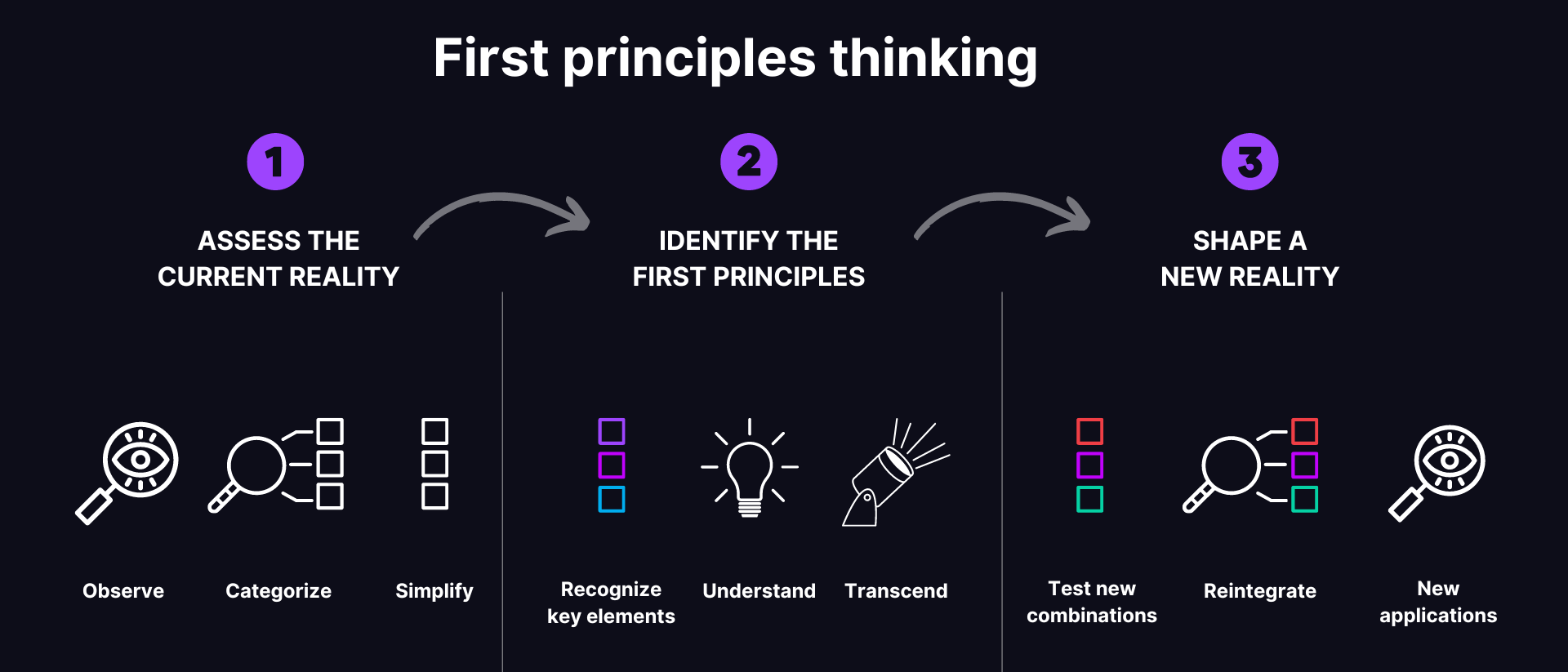
Largest Levers First
Every business must prioritize limited time & capital. We should prioritize our time on the elements of the company that provide the highest output-to-input ratio over a long time frame. Ideally, this process creates compounding effects that grow the output over time.
For Township, we focus on the following high-leverage activities: Data & Analytics, Sales & Marketing, Team & Talent Management, & Engineering & Technology.
Objectives & Key Results

We need to measure the direction & velocity of the company over time to ensure that a portfolio company is on track to become a generational business.
At a high level, these are our primary objectives for each portfolio company. These objectives overlap with the journey stages outlined below, but they live at a higher level and help us decide how to allocate energy and capital throughout the company.

Objective 1: Create Financial Resilience
Our objective is to ensure that the business is capable of handling any short—to medium-term financial risks (time horizon of 3-5 years). Generational sustainability requires that we address both downside risk tolerance and sustainable growth over time.
- Key Result 1.1: Increase shareholder equity by A%
- Key Result 1.2: Increase return on assets by B%
- Key Result 1.3: Increase net income growth by X%
- Key Result 1.4: Increase return on working capital by Y%
Each of these key results is to be determined based on the initial conditions of the business.
Objective 2: Create a System of Lifelong Service
We want the company to create the most value for the best customers and provide a phenomenal experience for generations. From the customer base's perspective, we want the business to be both high-quality and durable.
- Key Result 2.1: Increase customer engagement by A%
- Key Result 2.2: Increase customer retention by B%
- Key Result 2.3: Increase customer lifetime value by X%
These metrics ensure that the company is continuously creating, capturing, and retaining the value it creates for customers.
Objective 3: Build a Culture of Community Impact
We must ensure that the portfolio companies actively care for the people and the community within & around the company. When you take care of the people, the people take care of you.
- Key Result 3.1: Increase customer referrals by A%
- Key Result 3.2: Increase employee tenure & retention by B%
- Key Result 3.3: Increase individual & team satisfaction by X%
These metrics ensure that the business creates value beyond a simple transaction. The business should create fulfillment, purpose, and a sense of belonging for those involved in it.
Objective 4: Build an Autonomous Team
The team must be successful and able to handle change over time. We want to ensure the executive team can operate autonomously while adapting to natural change.
- Key Result 4.1: Create a shared, strategic 5 year vision & an operational plan to realize the vision.
- Key Result 4.2: Create a shared executive dashboard to track the short and long term metrics of the company.
- Key Result 4.3: Create & operationalize a comprehensive succession plan and training program for all key roles.
These key results increase the autonomy and resilience of the company over time.
Portfolio Company Journey
Much like a customer or employee journey, we want to craft an experience for the portfolio company that's measurable, repeatable, and effective at achieving our primary vision.
We draw inspiration from Yu-kai Chou's Octalysis Framework for creating engagement within games. Chou breaks down games into 4 primary phases: Discovery, Onboarding, Scaffolding, and Endgame.
- Discovery: Why would people even want to start the journey?
- Onboarding: How do you teach users the rules and tools to play the game?
- Scaffolding: The regular journey of repeated actions towards a goal.
- Endgame: How do you retain your veterans?
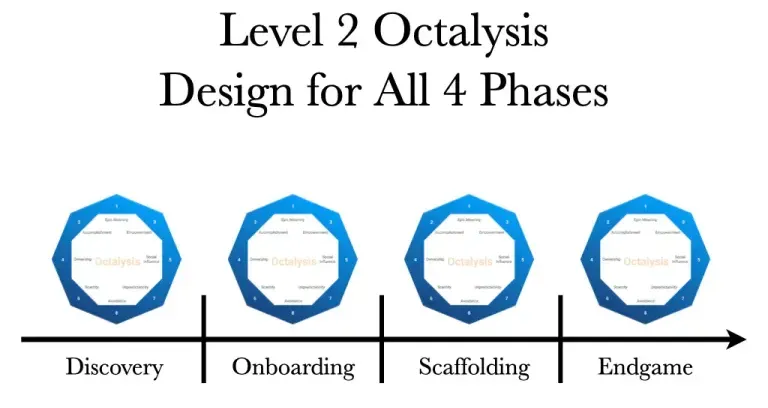
We need to consider the experience, motivations, and drivers across each phase or lifecycle of the portfolio company. We break down our Portfolio Company Journey into five distinct phases with different objectives for each stage: Assessment, Activation, Onboarding, Stabilization and scale, and Legacy Building.
- Assessment: Understanding if & how we could work together
- Activation: Determine the best way to create alignment for the long term
- Onboarding: Building systems of visibility and accountability
- Stabilization & Scale: Navigating growth, adaptation, and change
- Legacy Building: Ensuring multi-generational sustainability
Let's break down each phase to understand what's happening.
Assessment
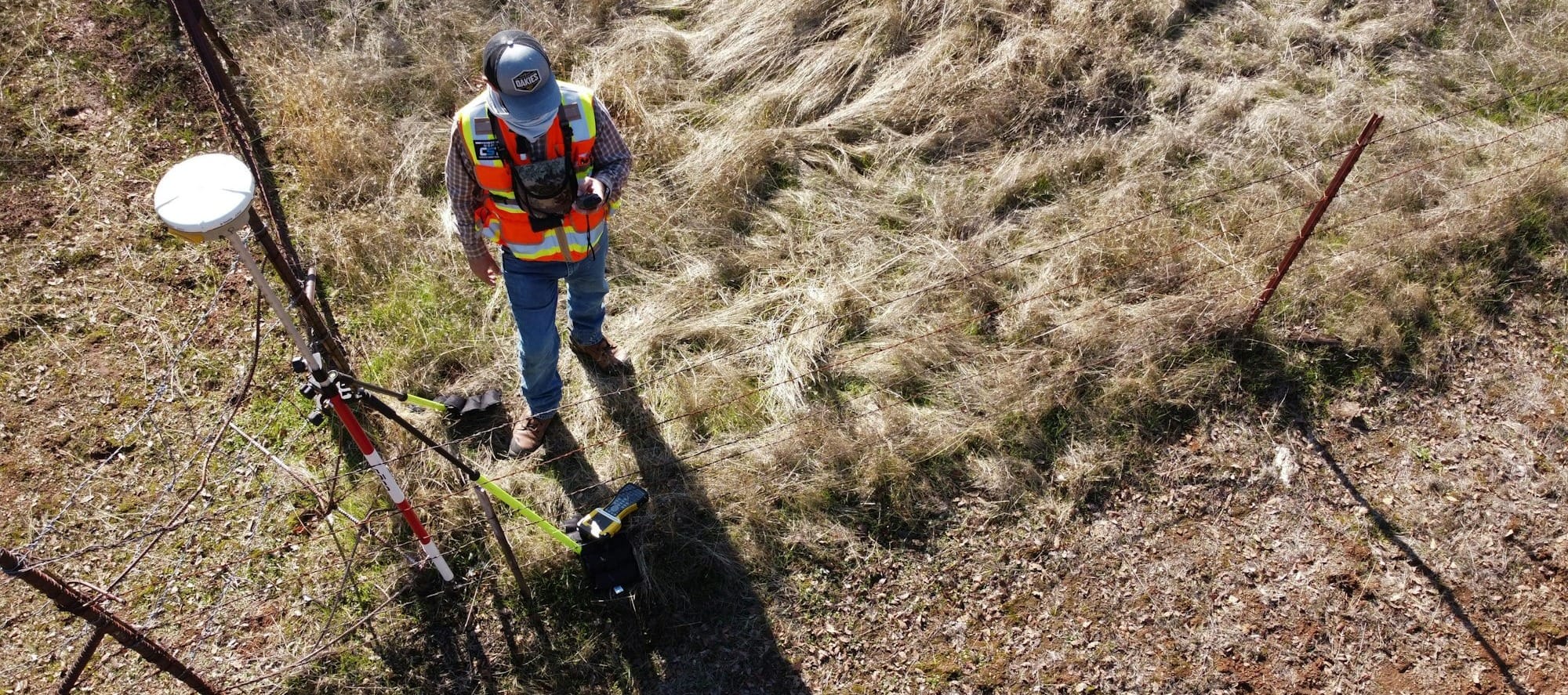
Assessment is the first phase in the portfolio lifecycle. It starts predominantly after our Letter of Intent (LOI) is accepted and before the business is acquired. We need to understand how we will position and integrate the company into our broader Township vision and whether we can work with the Seller and team to build something together. We start our journey by seeking to develop a vision and strategy for the company's future.

Timeframe: ~2 - 4 months
Primary Objective: Determine the company's high-level, long-term strategy as part of the Township portfolio and its viability.
End of Phase: The business is acquired, and the transaction has been closed.
Core Drivers: This phase is exploratory but sets the stage for all future stages.
- Epic Meaning: We want to create a vision & narrative for generational success for ourselves, the executive team, and our investors.
- Ownership & Possession: We want everyone to feel bought into working together and understand what that can look like and how they contribute.
Essential Questions: To ensure that we're acquiring the right company and that we're able to execute, we need to ask the following:
- Does the company align with the portfolio strategy?
- Can our team create outsized value for the organization?
- Can our team identify & address all the outstanding risks that are associated?
- Where are the opportunities for long-term value creation?
- What are the viable strategies to manifest that value creation?
- Do we want to acquire this business?
General Process: The Assessment phase is to understand the risks, align leadership, and attract capital and talent to the organization.
We start by understanding the data & analytics of our 5 key strategic inputs for any business (See "Start From First Principles" above):
- Technology: The core / underlying technology of the product or service
- Industry: The macro industry & the serviceable area the company operates in
- Customers: The conceptual & the actual customers the business services
- The Business: The actual business itself gathered from the executive team / seller
- Team: The internal team within the business
We gather this through sessions with the Seller, research, advisor conversations, and first principles thinking. We want the executive team to clearly understand the Objectives and Goals we're trying to accomplish. (See Objectives & Key Results above)
Some activities include:
- Creative Vision Session: Collaborate on the future vision of the business within the next 5 years.
- Operational Planning Session: Identify high-level strategic projects or experiments related to the vision.
- Financial & Capital Expenditure Session: Define the costs needed for the strategic projects.
Key Artifacts or Operational Docs: Many potential artifacts can come from this phase, such as:
- Industry SWOT analysis
- Customer segmentation & CLTV assessment
- Team skills gap analysis
- Business Plan
- Acquisition readiness form
Activation

After the business has been acquired, we work together on the tactical and operational plans that were discussed during the Assessment. We want to create short-term wins and early momentum. We may not be executing on the longer-term plan yet, but that's okay. Ensuring business continuity over change was our priority in the beginning, but we are getting ready to reconfigure the business more fully.

Timeframe: ~1 - 3 months
Primary Objective: Ensure that our teams are aligned with the long-term strategy and the short-term operational objectives in a Phase 1 plan.
End of Phase: The Activation Checklist is complete.
Core Drivers: This phase starts after closing when the owner(s) gets paid and there are celebrations. Now, we need to get the rest of the team.
- Ownership & Possession: The entire team is responsible for the plans and subsequent execution of those plans. We want to design systems where the team feels bought into the next deeper execution phase.
- Development & Accomplishment: The team needs to feel accomplished early on. We want to create situations for early and easy wins in the organization.
Essential Questions: To ensure we're aligned & working together, we need to ask questions such as:
- How do we address the most significant risks in the business?
- What are the key projects, objectives, & milestones for the organization?
- What critical operational motions need to be measured?
- How do we get early wins and build momentum?
Activation Checklist: This phase will be complete once the following items are created, reviewed, and operationalized.
- Short & long-term strategy developed
- Phase 1 objectives, key results, & key milestones agreed on
- A shared & finalized executive dashboard
- Sales & marketing operational plan created
- Team hiring & growth plan
- Visibility of key metrics on all operational systems
Proper documentation and knowledge transfer take real time and energy. Thus, we need to create the time and energy to work through these items. We want to incentivize the executive team to delegate tasks to the team, invest in minor support roles, and set clear priorities for the executive team early on.
Phase 1 Plan: Given that the business is already operational, the objective of the Phase 1 Plan is to address all outstanding risks clearly and concisely.
This initial plan should include:
- Objective: What the plan should accomplish?
- Key Results: How will you know you've accomplished it?
- Milestones: When should certain metrics / sub-objectives be hit?
- Deliverables: What needs to be created to make this happen?
- Projects & Experiments: What are the possible ways to achieve the objective?
Using American psychologist Bruce Tuckman's model for group development, we are most likely in the "Storming" phase. We acknowledge this reality, and by the end of this phase, we should feel firmly in the "Norming" category, completing early milestones and both teams having built systems and transparency for reciprocal support.
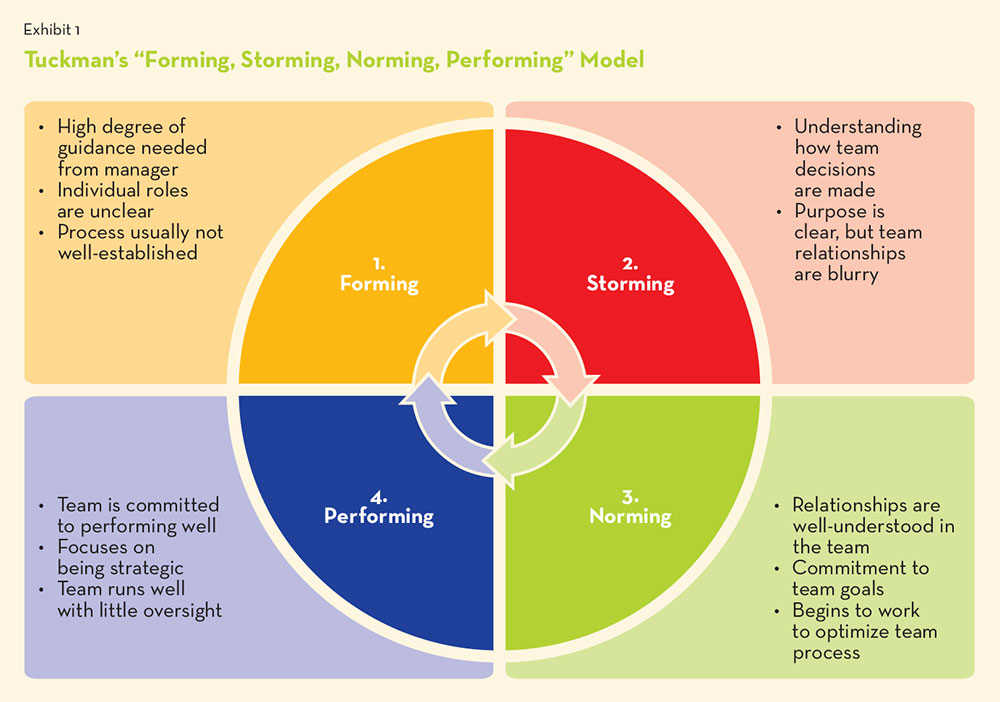
Stabilization

Stabilization is the full-on execution of the Phase 1 plan. We have visibility of the company's key strategic and operational metrics. We have an agreement on the plan(s) in place. The team should know the different projects for which they are responsible. It's time to make the short-term vision a reality.

Timeframe: ~12 - 24 months
Primary Objective: Achieve the goals & milestones of Phase 1
Secondary Objective: Establish strategic & operational transparency by implementing systems for oversight, accountability, and continuous improvement. This includes financial controls, KPIs, long-term incentives & governance structures.
End of Phase: Phase 1 is complete.
Core Drivers: As we enter higher-fidelity execution, the team must work together to accomplish the objectives, and thus, we want to understand the core drivers around team, leadership, and project-based activity.
- Development & Accomplishment: The team wants to win and hit the critical milestones of Phase 1.
- Empowerment of Creativity & Feedback: The team wants to collaborate, share ideas, and see the results of their efforts quickly.
- Social Influence & Relatedness: The team works together to accomplish the Phase 1 objectives.
Essential Questions: Success begets success. How do we ensure it happens & keeps happening?
- How is success measured, and are those metrics aligned with long-term goals?
- How do we make the business & team more autonomous?
- How do we find, retain, and promote great talent for the next phase of the organization?
- Are executive systems and processes in place to ensure smooth operation?
Examples Activities: Some activities at this stage to assist with operational activities:
- Build an internal advisory board
- Hiring an internal recruiter/head of talent to build an internal talent pipeline
- Hiring a CFO into the organization to assist with ongoing transparency
- Creating strategic partnerships or marketing opportunities
This phase is highly dependent on the company's initial conditions, so options are constrained by the company's resources (time, money, people, etc.). We are trying our best to bridge the gap from where the business is to where it needs to be before it can genuinely start to scale.
Scale
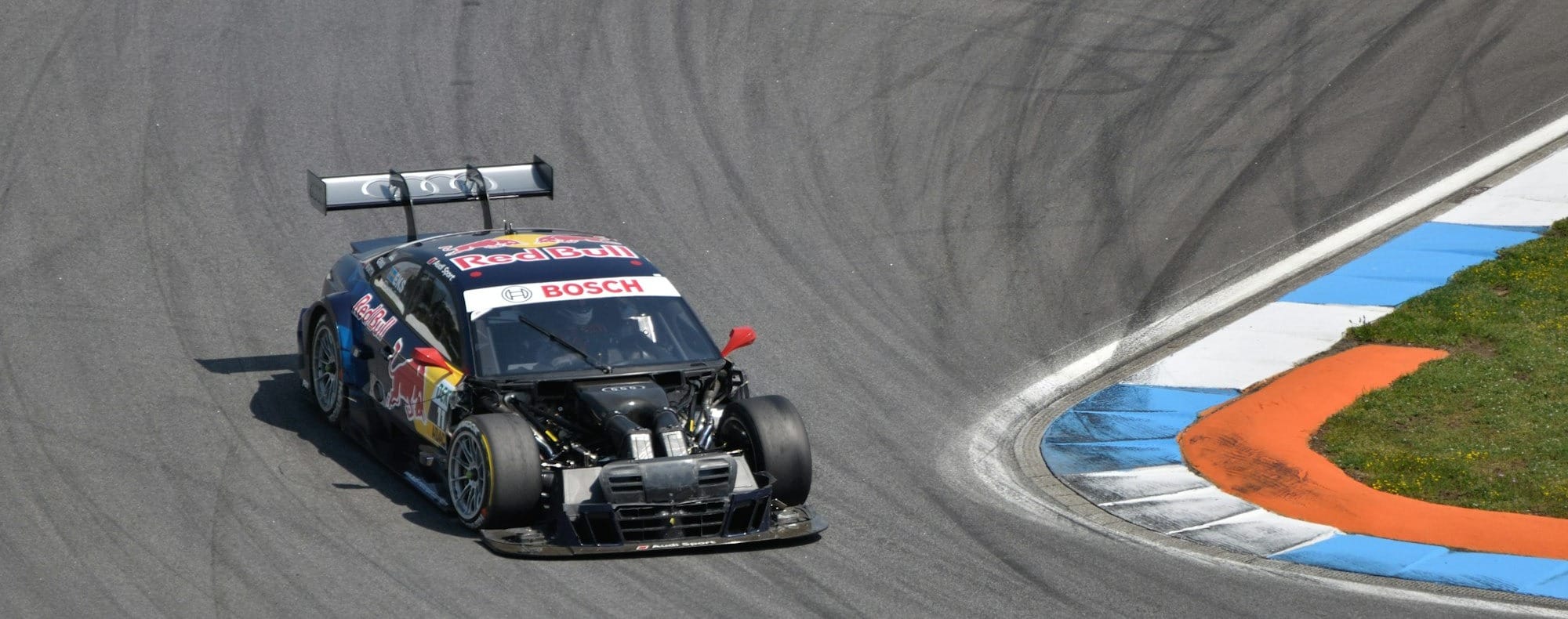
Entering this phase, the company is in a powerful position toward becoming a generational business. The business isn't a generational business yet, but it should be coming.

Timeframe: ~1 - 10 years
Primary Objective: Scale the business so that it operates without any clear points of human failure. This phase is focused on long-term expansion while maintaining operational integrity. The checklist at the bottom sums up the results of this stage.
End of Phase: The business has completed a step function (10x) in scale.
Core Drivers:
- Unpredictability & Curiosity: As the organization grows, uncertainty about "what happens next" increases. We want a healthy balance of known and unknown.
- Empowerment of Creativity & Feedback: The team wants to collaborate, share ideas, and see the results from their efforts quickly.
- Development & Accomplishment: The team is growing, and people will want/need promotions. Clear paths for growth should be built.
Essential Questions: The business has the opportunity to create more jobs, serve more customers, and create more value for more individuals.
- Is the business on track to last generations?
- How are consistent revenue streams and profitability ensured?
- Is there a culture of innovation, adaptation, and giving?
- How can the company ensure longevity in a changing market?
- How can the company scale sustainably without overextending itself?
Scale Checklist: A high-level list that is valid for the business to enter into the legacy building phase of the company.
- A fully autonomous leadership team is in place to run the day-to-day operations.
- Marketing is run without the face of the owner or key personnel.
- Service/product delivery completed without the owner or key personnel.
- Multiple reliable customer acquisition channels
- Low churn recurring revenue
- Diverse customer base
- Automated metrics tracking & reporting
- High cash flow, profitable, & growing ( with a story )
- Audit ready financials
- $5M+ in EBITDA
Legacy Building

At this final stage, the business has become a sizable enterprise and has achieved escape velocity. The enterprise should be able to stay in orbit for decades with minimum input. The systems built along the way are self-perpetuating and capable of sustaining the organization for generations.

Timeframe: ~10+ years
Primary Objective: Sustain the enterprise organically, leveraging its strengths to capture more significant market share or enter adjacent markets. This phase is focused on long-term expansion, maintaining operational integrity, and providing constant service to customers and people.
Secondary Objectives: The enterprise can prioritize resources for ultra-long-term projects that may not have been possible before. These could be focused on solving some of humanity's greatest challenges.
End of phase: Never.
Core Drivers: The drivers at this stage come full circle
- Epic Meaning: The call to be the best versions of ourselves and serve humanity keeps us going.
- Empowerment of Creativity & Feedback: The opportunity to do things nobody else has done before and take more significant risks.
- Ownership: The ability to contribute to the larger vision and feel a sense of ownership of the results.
- Loss & Avoidance: We want to avoid losing any forward progress or ground we've gained.
Essential Questions: We want to know where we can explore next.
- How does the enterprise continue to thrive over time?
- What are the core challenges in the broader industry that can be solved?
- How can we maximize fulfillment and support for our team across families and generations?
- Where does humanity need us the most?
Success within phase: The enterprise has operated autonomously for 10 years and has experienced at least 1 successful succession planning event. It is positioned to stay the leader in its field of expertise for the foreseeable future.
Township Ventures is a long term holding company that buys and builds Texas businesses to last generations.
If you're curious to learn more about how we buy businesses or opportunities to participate, don't hesitate to reach out.
